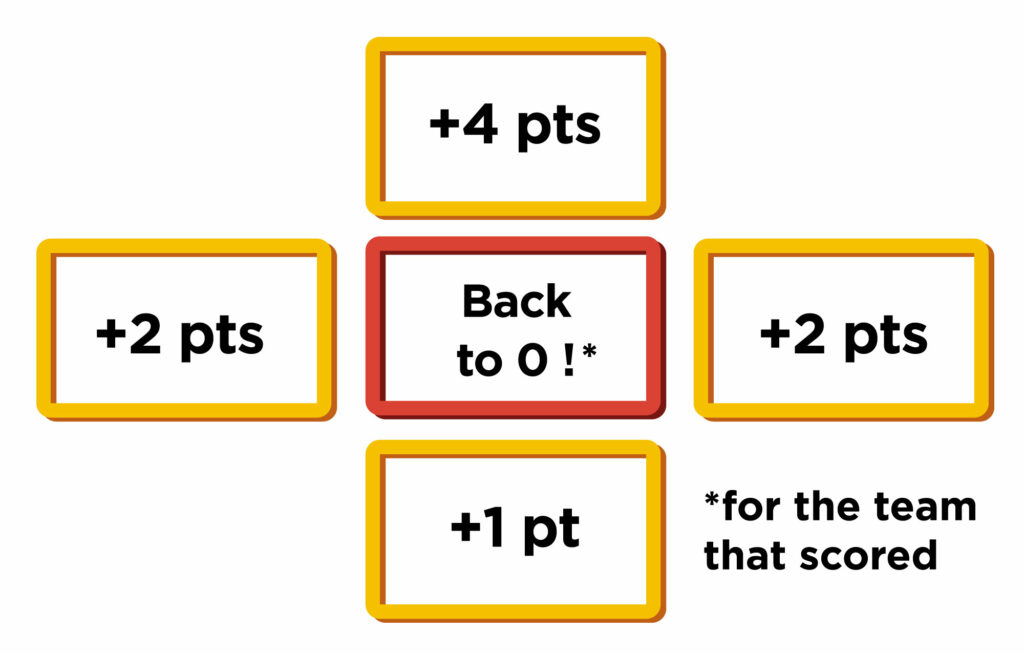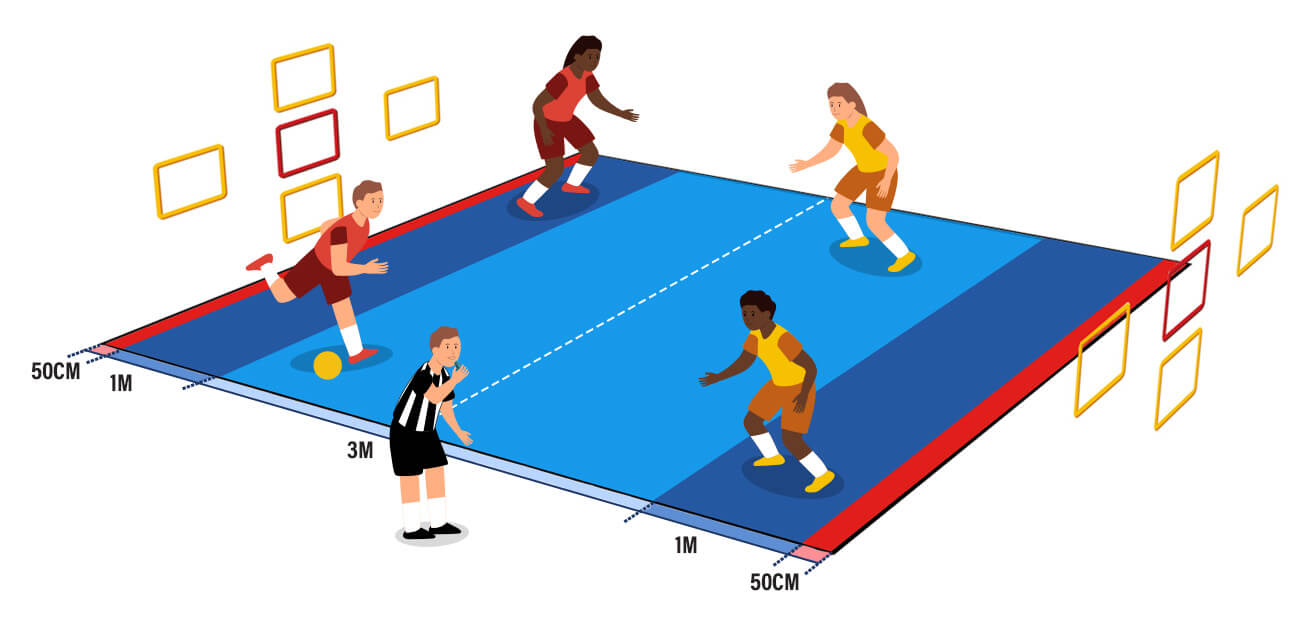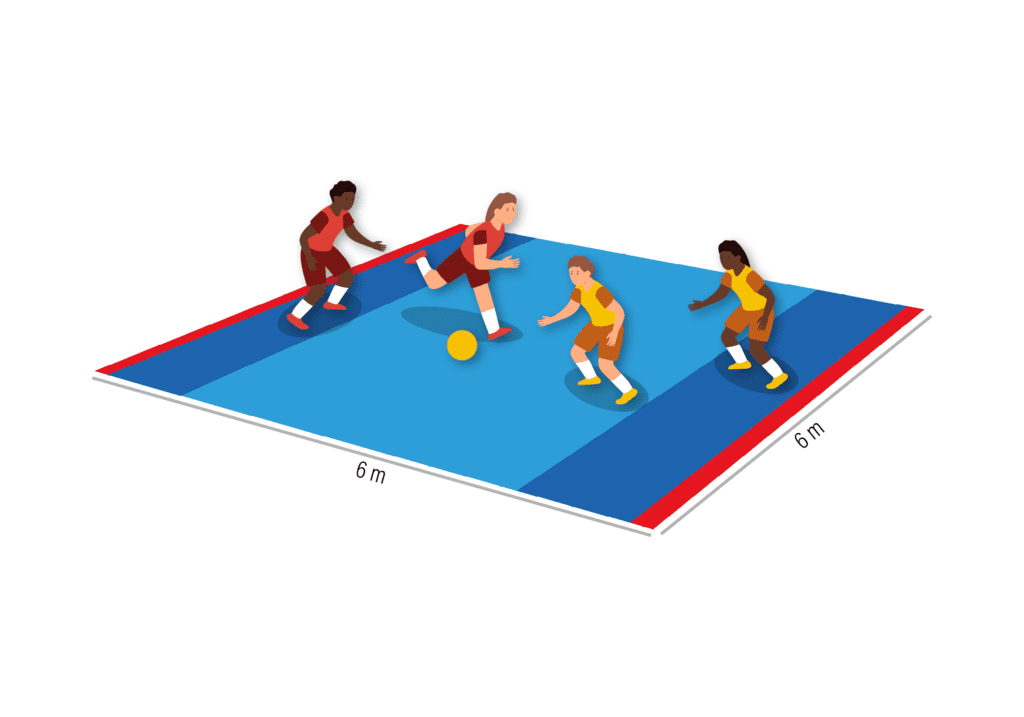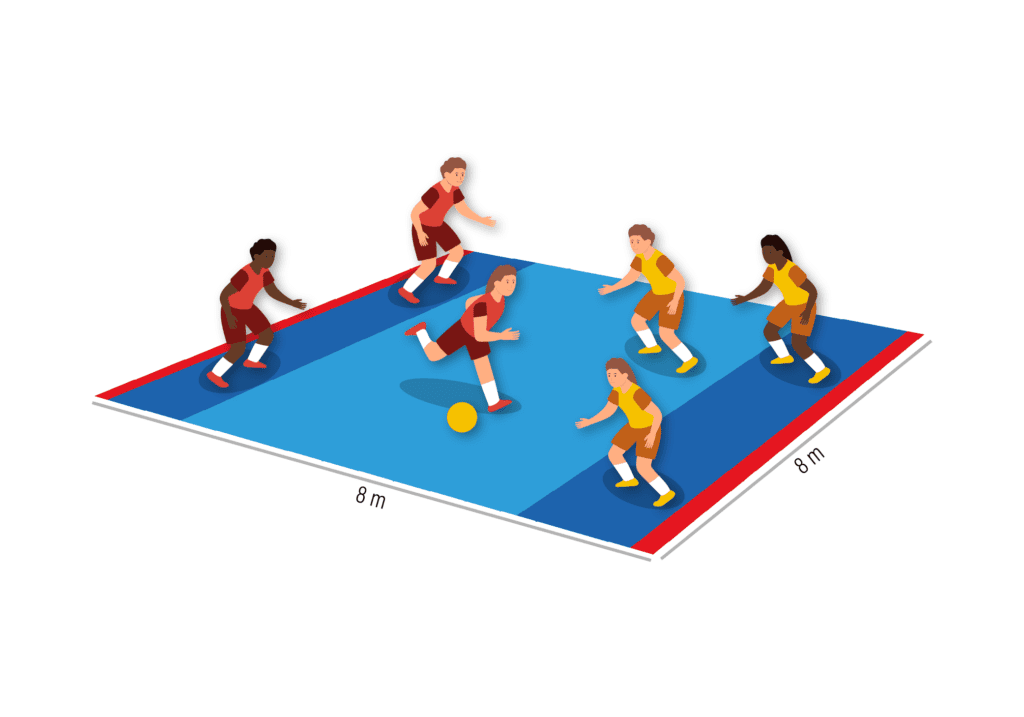HOME BALL
FOOT
The most spectacular and technical discipline, Home Ball Football combines precision, technique, and endurance. This sport is a spectacle, with numerous technical moves, feints, and precise shots.
Home Ball Foot in vidéo
Goal of the game
Two teams compete against each other. The objective is to win the game by scoring more points than the opposing team into the yellow targets (with feet and head only). Intentional physical contact is forbidden.
Duration of a match
- First half : 2'30
- Half time : 1'
- Second half : 2'30
Targets' value
Yellow targets are positive !
But BE CAREFUL, cred targets are penalties. A player who shoots in a red target bring their team’s score back to 0 (wether it’s the opposing team’s or their own!).
Beware of ball deflections! The last player to touch the ball is penalized if it enters a red target.

Restart
First half
At the start of the first half of the match, the team that wins the RPS (Rock, Paper, Scissors) chooses its side of the court and wins the kickoff.
Second half
The teams change sides and the kickoff is by the team which did not kick off the first half.
During the match
When a team scores, it is the opposing team which restarts.
When the referee awards a free kick to a team.
Placement on the field

Example of player positioning on a 6m50 x 6m50 pitch.
- Defence zone
Players from the opposing team cannot enter this area. If a shooter scores but places their foot in this area, the goal is disallowed.
- Mixed zone
Players are free to move wherever they want within this area.
- Forbidden zone
It is forbidden to enter this area when it influences a phase of the game.
Free player
Their playing area is their defense zone and the mixed zone. A maximum of 2 free players per team.
The center
His playing area is only the mixed zone. From 3 vs 3, all additional players are pivots.
The referee
The referee stands at the entrance to the home ball court. Two assistant referees are permitted.
Substitutes
Substitutes may only enter the field at half-time or at any time to replace an injured player.
A player may recover a ball that is in the opponent’s defensive zone if they only place their foot on the ball, without making direct contact with the ground. When a ball is “scratched,” the player must pass or go back through their defence zone before being able to shoot again.
Distribution of roles
The number of players varies depending on the size of the field. This rule ensures an optimal playing experience by preventing all targets from being defended simultaneously. Below are the player numbers for competitive play:

4m50 x 4m50
1 vs 1 – 1 free player per team

6m50 x 6m50
2 vs 2 – 2 free players per team

8m50 x 8m50
3 vs 3 – 2 free players + 1 center per team
For leisure practice, add one player per team.
Prohibitions in the game
Level 1 foul
- Contact, body-to-body pressing
- Playing on the ground
- Entering the opponent’s defence zone
- Entering a playing area prohibited by one’s position
- Keeping the ball for more than 10 seconds in one’s defensive zone
Level 1 Sanction
INDIRECT FREE KICK
Each player returns to their half of the field and the team that was fouled starts.
Level 2 foul
- Touching the ball with your hands or arms
- Holding or pushing your opponent
- Tackling your opponent
- Clinging to or throwing yourself into the net
- High kicking
Level 2 Sanction
PENALTY
The fouled player or their teammate positions themselves in the center of their defensive zone to shoot unopposed. WARNING! If the shooter sends the ball into the red target, their team’s score resets to 0!
Level 3 foul
- Anti-play
- Disrespect towards the referee/players
- Dangerous actions
- Failure to comply with safety instructions
Level 3 Sanction
ARBITRATION DEFEAT
The sanctioned team lost the match with a score of 10 to 0.
If draw
If the teams are tied at the end of regulation time: overtime. The first team to score in a yellow target wins.
